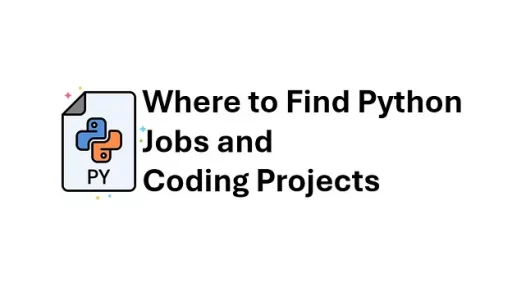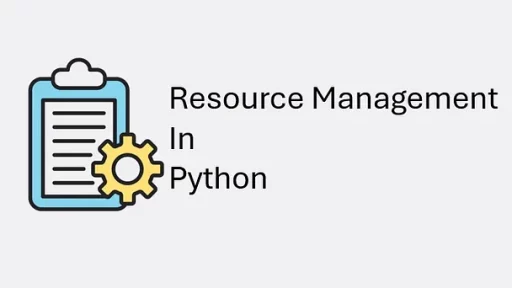From wiki: “Probability is the branch of mathematics and statistics concerning events and numerical descriptions of how likely they are to occur.”
Probability is a foundational aspect of mathematics that helps analyze uncertainties. Python makes exploring these concepts straightforward with its versatile tools and libraries. Below, we delve into key probability concepts, providing formulas in plain text, their Python implementations, and real-world applications.
1. Experimental Probability
Plain Text Formula:
P(E) = (Number of favorable outcomes) / (Total number of trials)
Experimental probability is calculated by observing actual outcomes from experiments.
Example:
# Simulate rolling a die 1000 times
import random
trials = 1000
favorable_outcomes = sum(1 for _ in range(trials) if random.randint(1, 6) == 3)
experimental_prob = favorable_outcomes / trials
print(f"Experimental Probability of rolling a 3: {experimental_prob}")Output:
Experimental Probability of rolling a 3: 0.175Possible uses: This code simulates rolling a six-sided die 1,000 times to find the frequency of rolling a 3. This is valuable for modeling real-world systems, such as predicting customer behavior based on historical data.
A business can use this probability to:
- Forecast sales for future promotions.
- Target specific customer segments to increase conversions.
- Allocate marketing resources efficiently.
Dynamic Analysis: If more data is collected (e.g., over multiple promotions), the probability can be updated to reflect changing customer behavior trends, making the predictions more accurate.
2. Theoretical Probability
Plain Text Formula:
P(E) = (Number of favorable outcomes) / (Total possible outcomes)
Theoretical probability assumes all outcomes are equally likely.
Example:
favorable_outcomes = 1 # Rolling a 3 on a 6-sided die
total_outcomes = 6
theoretical_prob = favorable_outcomes / total_outcomes
print(f"Theoretical Probability of rolling a 3: {theoretical_prob}")Output:
Theoretical Probability of rolling a 3: 0.16666666666666666Possible uses: This computes the likelihood of a single outcome in a fair scenario. It’s often used in quality assurance and game theory.
Application in Quality Assurance:
- Testing Processes: The probability helps focus resources on the stages most likely to fail.
- Preventative Maintenance: Knowing probabilities allows the team to implement measures that minimize defects.
- Predicting Defect Rates: Helps forecast the percentage of defective products before conducting tests.
3. Probability Using Sets
Plain Text Formula:
P(A or B) = P(A) + P(B) — P(A and B)
This involves combining probabilities of events using sets.
Example:
A = {1, 2, 3}
B = {3, 4, 5}
union = A.union(B)
intersection = A.intersection(B)
probability = (len(union) - len(intersection)) / 6 # 6 possible outcomes on a die
print(f"Probability of A or B: {probability}")Output:
Probability of A or B: 0.6666666666666666Possible uses: Useful in situations like predicting overlapping customer preferences.
1. Product Bundling:
- Insight: If a significant overlap exists between products, bundling them may increase sales and improve customer satisfaction.
- Action: Offer a discount on purchasing both a phone case and a charging cable.
2. Inventory Management:
- Insight: Products with high overlaps require careful inventory management to avoid stockouts when customers buy them together.
- Action: Prioritize restocking these items during sales or high-demand periods.
3. Targeted Marketing:
- Insight: If customers who buy Product A often buy Product B, a campaign targeting Product A buyers with ads for Product B may boost cross-selling.
- Action: Use the calculated probabilities to design effective email or social media marketing campaigns.
4. Conditional Probability
Plain Text Formula:
P(A | B) = P(A and B) / P(B)
Conditional probability measures the likelihood of an event given another has occurred.
Example:
P_A_and_B = 0.2 # Probability of A and B
P_B = 0.5 # Probability of B
conditional_prob = P_A_and_B / P_B
print(f"Conditional Probability of A given B: {conditional_prob}")Output:
Conditional Probability of A given B: 0.4Explanation: This is essential in machine learning and Bayesian networks for modeling dependencies.
Possible uses in machine learning:
Application:
- The spam filter uses this probability to classify emails as spam or not.
- Conditional probability models allow the system to update predictions dynamically as more data becomes available.
Possible uses in Bayesian Networks:
Application:
- Healthcare: Used for diagnosing diseases based on symptoms and test results.
- Autonomous Systems: Helps robots or AI systems make decisions under uncertainty.
- Customer Segmentation: Determines the probability of customer behavior given specific traits or actions.
5. Multiplication Law
Plain Text Formula:
P(A and B) = P(A) * P(B)
Used when events are independent.
Example:
P_A = 0.3 # Probability of A
P_B = 0.5 # Probability of B
joint_prob = P_A * P_B
print(f"Probability of A and B: {joint_prob}")Output:
Probability of A and B: 0.15Explanation: This is applied in genetics and network reliability studies.
Possible uses in genetics:
Application:
- Genetic Counseling: Helps predict the likelihood of offspring inheriting genetic conditions or traits.
- Selective Breeding: Guides breeders in selecting animals or plants with desired genetic combinations.
Possible uses in network reliability studies:
Application:
- System Design: Engineers use this probability to estimate the overall reliability of a network and decide on redundancy requirements.
- Risk Assessment: Helps prioritize maintenance efforts on components with higher failure probabilities.
6. Permutations
Plain Text Formula:
nPr = n! / (n — r)!
Permutations count the arrangements of objects.
Example:
import math
n = 5 # Total objects
r = 3 # Selected objects
permutations = math.factorial(n) / math.factorial(n - r)
print(f"Number of Permutations: {permutations}")Output:
Number of Permutations: 60.0Explanation: Useful for scheduling tasks or arranging products on a shelf.
Possible uses in scheduling tasks:
Application:
- Project Management: Optimizing task sequences to minimize time or maximize output.
- Workforce Scheduling: Assigning shifts to employees in different orders for specific outcomes.
Possible uses in arranging products:
Application:
- Retail Displays: Testing multiple product arrangements to find the most attractive one for customers.
- Warehouse Logistics: Organizing goods efficiently to improve access and minimize retrieval times.
7. Combinations
Plain Text Formula:
nCr = n! / [r! * (n — r)!]
Combinations count the selections of objects without regard to order.
Example:
import math
n = 5 # Total number of objects
r = 3 # Number of objects to choose
combinations = math.factorial(n) / (math.factorial(r) * math.factorial(n - r))
print(f"Number of Combinations: {combinations}")Output:
Number of Combinations: 10.0Explanation: Applied in lottery odds and team selection.
Possible uses in lottery odds:
Application:
- Odds Calculation: The number of combinations provides the odds of winning.
- Lottery Design: Helps design lotteries with appropriate difficulty levels by adjusting n and r.
Possible uses in team selections:
Application:
- Team Formation: Helps a coach or manager explore all possible team configurations.
- Fair Selection: Ensures unbiased and diverse grouping by analyzing the full range of possibilities.
8. Continuous Probability Distributions
Plain Text Formula:
f(x) = (1 / (σ√(2π))) * e^(-(x — μ)² / (2σ²))
Models probabilities for continuous variables, such as heights or weights.
NOTE: Requires pip install scipy
Example:
import scipy.stats as stats
mu = 0 # Mean
sigma = 1 # Standard deviation
probability_density = stats.norm(mu, sigma).pdf(0) # Probability density at x=0
print(f"Probability Density: {probability_density}")Output:
Probability Density: 0.3989422804014327Explanation: Used in financial modeling and quality control.
Possible uses in financial modeling:
Application:
- Risk Assessment: Estimate probabilities of large price swings.
- Portfolio Management: Predict likelihood of returns staying within target ranges.
- Option Pricing: Derive probabilities for achieving specific strike prices.
Possible uses in quality control:
Application:
- Defect Rate Prediction: Calculate the proportion of products outside specifications.
- Process Optimization: Identify areas to reduce variation and improve consistency.
- Acceptance Sampling: Determine whether a batch of products meets quality requirements.
9. Binomial Probability Distribution
Plain Text Formula:
P(X = k) = (nCk) * p^k * (1-p)^(n-k)
Describes success/failure outcomes.
Example:
import math
n, k, p = 10, 3, 0.5
binomial_prob = math.comb(n, k) * (p ** k) * ((1 - p) ** (n - k))
print(f"Binomial Probability: {binomial_prob}")Output:
Binomial Probability: 0.1171875Explanation: Key in predicting customer purchases or election results.
Possible uses in predicting customer purchases:
Application:
- Marketing Strategy: Predicting the number of customers who will purchase allows businesses to plan inventory and staffing.
- Ad Campaign Effectiveness: Understanding purchase probabilities helps evaluate the impact of promotional efforts.
Possible uses in predicting election results:
Application:
- Polling Analysis: Helps assess the likelihood of specific outcomes based on poll results.
- Campaign Planning: Guides resource allocation to areas where probabilities suggest the outcome could shift.
10. Geometric Probability Distribution
Plain Text Formula:
P(X = k) = (1-p)^(k-1) * p
Gives the probability of the first success on the k-th trial.
Example:
import math
k, p = 4, 0.3
geometric_prob = (1 - p) ** (k - 1) * p
print(f"Geometric Probability: {geometric_prob}")Output:
Geometric Probability: 0.10289999999999998Explanation: Helps in modeling time until equipment failure or first customer conversion.
Possible uses in modeling time until equipment failure:
Application:
- Maintenance Planning: Predict when equipment might fail to schedule preventative maintenance.
- Spare Part Inventory: Estimate demand for replacement parts based on the failure distribution.
Possible uses in customer conversion:
Application:
- Sales Strategy: Estimate the average number of calls required to achieve the first conversion, helping sales teams manage expectations and resources.
- Resource Allocation: Predict the likelihood of success over a set period, guiding staffing and campaign decisions.
Thank you for reading this article. I hope you found it helpful and informative. If you have any questions, or if you would like to suggest new Python code examples or topics for future tutorials, please feel free to reach out. Your feedback and suggestions are always welcome!
Happy coding!
C. C. Python Programming
You can also find this article at Medium.com


